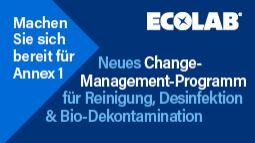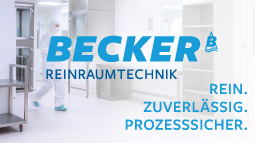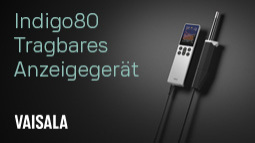COMPAMED 2018: Medical technology suppliers offer smart technologies for great leaps in medical care
For some time now, two essential trends have been dominating the field of medical technology and are ensuring short innovation cycles: dematerialization and digitalization. Accordingly, products are increasingly becoming more compact whilst their performance remains the same or is improved, they are increasingly easy to use and as a whole, innovations are driven by software and less by hardware. Intelligent prosthetics capture their surroundings using sensors and by doing so their function is tailored more ideally to the patient. Plasters are able to monitor the wound healing process or act as an early warning system and signal increased risk of an imminent asthma attack. Bracelets functioning as a “mini-hospital on the upper arm” have started appearing on the market. They are able to determine various body parameters such as heart rate, oxygen in the blood, stress levels or sleep rhythms. Even measuring blood pressure durably beat by beat no longer requires an inflatable cuff, as modern optical biosensors are now able to take care of this.
Innovations like these require close cooperation between medical technological manufacturers and their suppliers during development. Often, suppliers are the ones that give the decisive impulses for development leaps, and once again, visitors can see this for themselves at COMPAMED in Düsseldorf from November 12 to 15, 2018. With 800 exhibitors from almost 40 countries, COMPAMED is the international leading specialist trade fair for the supplier market for the medical technology industry and takes place alongside the world’s leading medical trade fair MEDICA (5,000 exhibitors). The scope of products, solutions and services presented and addressed at COMPAMED ranges from parts and components such as sensors, chips, wireless modules, energy and data storage to coating technology, packaging solutions and even complete made-to-order production. The list of exciting innovations is a long one, as numerous examples illustrate.
Blue light helps heal chronic wounds
Chronic wounds are notoriously difficult to treat, as they do not follow a typical healing process or healing time frame. The resulting strain is considerable, as over 40 million people are affected every year, causing costs of around 40 million Euros, which must be carried by the health care systems. Blue light is known for its antimicrobial and anti-inflammatory effect during the healing process’s initial phase and in addition does not damage tissue, in contrast to dangerous UV light. However, there was no evidence of the positive effect of blue light exposure in the later stages of wound healing, which has previously complicated the development of effective solutions for a complete therapy.
Together with six other partners, CSEM has contributed to closing this gap with the EU project MEDILIGHT. This cooperation has proven that exposure to blue light has far more than just an antibacterial effect. The antiproliferative effect has now been clearly proven and shows that blue light prevents the epidermis on the wound surface from closing prematurely in the early healing phase. In addition, the consortium of European research laboratories has proven for the first time that, with a further suitable dose, blue light can efficiently activate vital skin cells, namely keratinocytes and fibroblasts, thus accelerating the final wound healing process. The developed prototype is the ideal solution for an intelligent, mobile system for treating chronic wounds with blue light, for example diabetic ulcers. In addition, the project created the prerequisites for a future commercialisation of devices based on light therapy and to monitor wound healing.
“By discovering and demonstrating the effectiveness of blue light both for antibacterial application as well as for activating vital skin cells, MEDILIGHT allowed us to apply for two patents,” explains Marielle Bouschbacher, project manager at URGO, the participating industry partner and project leader. “MEDILIGHT is also paving the way for further important possible applications such as disinfecting medical instruments and operating environments.”
3D printing rapidly grows in medical technology
3D printing remains a hot topic at COMPAMED. Often termed Additive Manufacturing, the process is growing faster in medical technology than in any other field of application. According to a forecast by the market research company “Markets and Markets”, global 3D printing for medical products is expected to increase from 840 million US dollars in 2017 to around 1.9 billion dollars by 2022, a yearly growth rate of 17.5 percent. Key factors for this rapid development are technological progress, an increase in private investments in this sector as well as the increasing application possibilities for the health industry. The growing market is divided into the large segments components, equipment, materials as well as software and services, with the last segment showing the largest growth. Here, the increasing development of progressive software solutions for manufacturing top quality, 3D-printed medical products is the main driving force.
The widely acclaimed seminar “3D fab+print” that took place last year on this topic will be followed up with an all-day conference on this topic held at this year’s COMPAMED 2018 on November 12 (3D fab+print Conference on Additive Manufacturing for medical applications). Among the presenting companies is Evonik, who have been systematically working on improved materials for orthopaedic surgery in their project house Medical Devices since 2014. “We are developing new solutions that help prevent operations or accelerate the healing process,” explains project house manager Balaji Prabhu. In the meantime, Evonik has established first materials on the market, among them a composite that consists of the polylactic acid RESOMER and a synthetic hydroxylapatite filler. Hydroxylapatite is the most common biomineral in the human body. This combination results in mechanical characteristics that are very similar to those of natural bones. RESOMER is completely degraded into carbon dioxide and water in the body, does not cause inflammatory reactions and is completely non-toxic.
RFID chips that can even be sterilised
The entire spectrum of sensors is still a big subject for many providers. The product market “Hightech for Medical Devices”, hosted by the IVAM Association for Microtechnology with 45 international participants, offers a particularly large selection. FEIG ELECTRONIC, for example, presents RFID reader solutions for the healthcare industry to identify medical devices and accessories that depict the consumption of medication and reagents, thus improving patient care and safety. RFID allows the implementation of accurate tracking solutions for medical devices as well as for individual processes within medical treatment. This relieves hospitals of numerous administrative and inspection tasks and enables them to use the resources that have been freed for even more intensive patient care. RFID-based inventory systems monitor the current stock of various materials used in hospitals and laboratories: Medication and reagents, blood and plasma bags, surgical instruments, textiles and many more. Additionally, RFID systems ensure accurate patient identification, monitor the respective treatment status and enable warning systems to improve the entire process chain. “RFID registers all relevant information in real time, without employees having to enter data into a computer by hand. This frees up more time for medical and patient care,” confirms Ellie Lee, Manager OR Information Management Services at Sunnybrook Health Sciences Centre in Toronto. FEIG develops and manufactures the entire range of RFID components, not just for medical technological devices, but for optimising hospital processes as well.
As can also be seen at microsensys, RFID technology offers a variety of possible application fields and each solution is subject to their own material and technology requirements. Especially for medical and pharmaceutical applications, there are a large number of guidelines that must be complied with. At COMPAMED, microsensys shows state-of-the-art RFID medical technology solutions and will debut their RFID sensor data logger for seamlessly monitoring temperature during steam sterilisation in autoclaves at +134°C and 3 bar. The company has had the patented mic3 technology since the mid 1990s. This technology realised the world’s smallest RFID transponder with an integrated coil on the chip with a size of approx. 1.5 cubic millimetres. With storage capacities of 64 bit read only to 64 Kbit read/write and temperature resistance of minus 45°C to plus 200°C, the mic3 transponders have sufficient storage capacities and high reliability.
Tailor-made nano coatings
Micro and nano technologies are an important part of COMPAMED. The Dutch company Surfix BV develops and supplies innovative tailor-made nano coatings for the micro and nanotechnology market, based on chemical surface modifications. “Our proprietary surface modification technology can even realize local and selective surface modifications, which allow complex geometries such as microfludics, lab-on-a-chip devices and biosensors made of different materials,” explains Dr. Luc Scheres, CEO at Surfix. The coating specialists have extensive expertise in the field of organic, physical and biochemical surface research, which enables them to build a “chemical bridge” between biology and physics. Surfix is involved in the BIOCDx programme, which was started in January 2017 and is financed by the European Union as part of their research and innovation programme. In this project, partners from four different countries work on developing a miniaturised, highly sensitive and reliable Point of Care device (PoC) with a disposable microfluid cassette to monitor cancer biomarkers. The device supports the recognition of primary tumours and metastases with a focus on breast cancer, hormone-resistant prostrate cancer and melanomas. As part of the BIOCDx project, Surfix will supply the nano coatings necessary to immobilise the various biomarkers on the surface.
High-ranking participants at the DeviceMed and IVAM forums
In addition to COMPAMED’s exhibition area, two established forums will present the trends in the supplier field of medical technology: In Hall 8b, the COMPAMED SUPPLIERS FORUM (held by the specialist magazine DeviceMed) focuses on the entire medical technology process chain. Among these are mechanical and electronic components as well as innovative materials and all sorts of made-to-order production. This year, particular focal points are Additive Manufacturing (November 12), Cyber Security (November 13), Regulatory Affairs (November 14) and Wearables (November 15). The COMPAMED HIGH-TECH FORUM (Hall 8a) presented by the IVAM Association for Microtechnology places key focus on microsystem technology, nanotechnologies and production technology and process control.
COMPAMED 2018 takes place in Halls 8a and 8b at the Düsseldorf exhibition centre. It is aimed primarily at technical buyers, specialists in research and development as well as packaging, production managers, construction engineers as well as process engineers.
Messe Düsseldorf GmbH
40001 Düsseldorf
Germany









